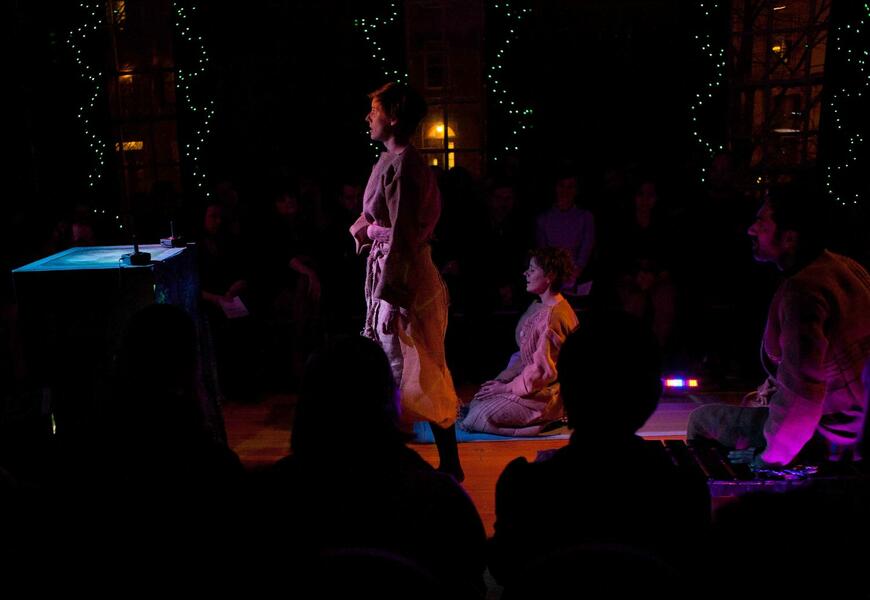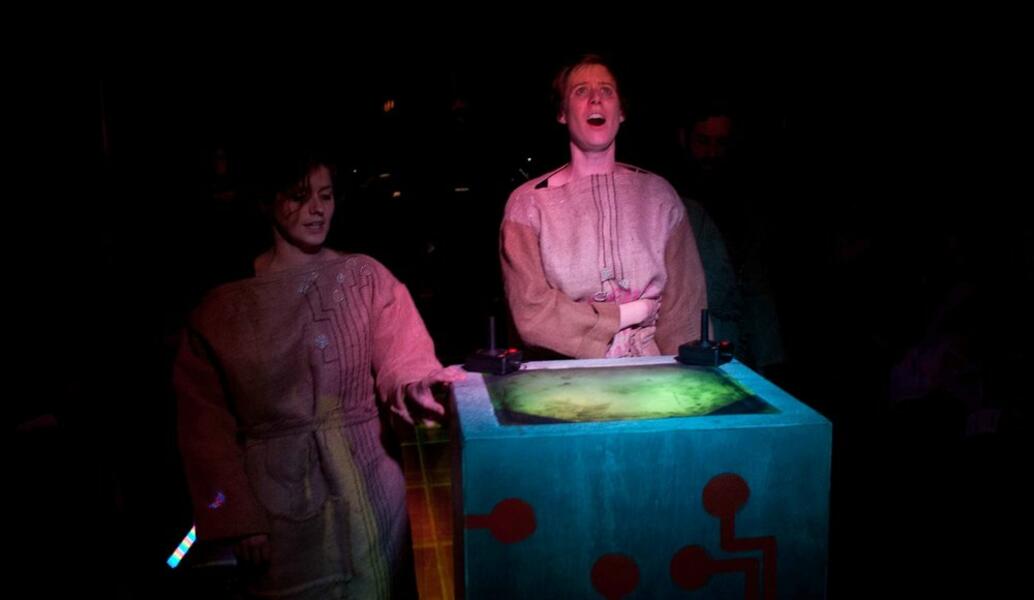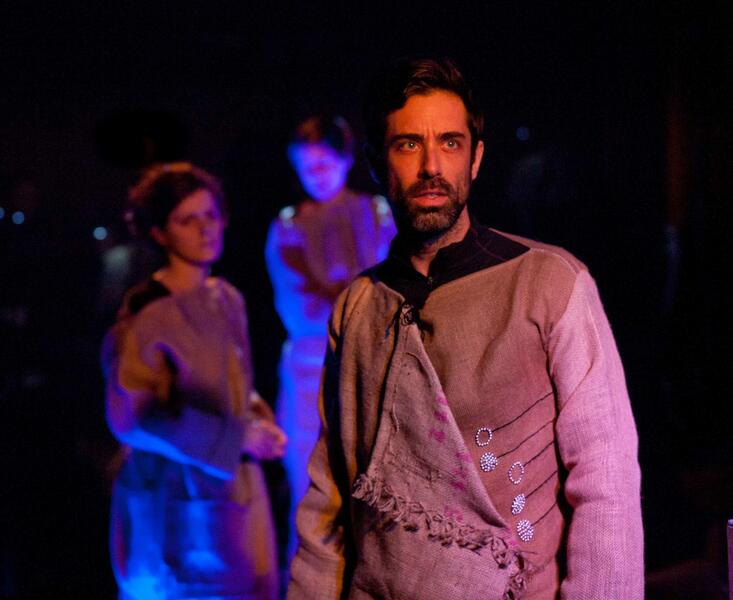About David

From an undergrad fascination with English ritual street theater and Peter Brooks’ THE EMPTY SPACE, through my years in Washington crewing with Peter Sellars’ American National Theater, then as one of the first sound designers on the mid-Atlantic theater scene, to my 27 years in Baltimore, I’ve been interested in theater “in the wild.” I’ve pursued theater that lives in the interstices of commercial, academic, and regional theater spaces. In this, I have leveraged an outsider point-of-view… more
Original music and sound design examples, 2015-2017
- don Juan Tenorio, Gala Hispanic Theater, Washington, DC, 2017.
- The Master and Margarita, Annex Theater, Baltimore, 2016.
- The Year of the Rooster, Single Carrot Theater, Baltimore, 2015.
- Jarry Inside Out, Spooky Action Theater, Washington DC, 2015
- Richard III, Chesapeake Shakespeare Company, Baltimore, 2017.
- Minotaur, Annex Theater, 2016.
Some lighting designs 2016-2017
After a second act that was a comedic cabaret, the third section of the piece turned dark and mysterious as the audience, now facing the back of the stage, witnessed a performance tied together by mystery, sound and salt.
The Shattering Frame was a unique noir tale of urban corruption, produced by Annex Theater in 2017. Director Trevor Wilhelms wanted a shadowy, fluid lighting treatment, controlled by the actors during performance. Four small spotlights were hand-held by performers and controlled from the dimmer system. This low-tech "moving lights" approach permitted many unique effects to be produced, which lent the story the demimondaine aspect it deserved.
The Fête of Mistakes, produced by Psychic Readings Company at Le Mondo in December 2016, presented a number of interesting challenges and opportunities. The performance space, lacking an existing lighting system or grid, became an intimate, claustrophobic theater that opened out into the wider space of Le Mondo for a spectacular finale demolition derby. Lighting instruments, ranging from LED flashlights to clip lights to standard theatrical fixtures, were used to create a subterranean "Cave of the Winds" beneath Niagara Falls.
-
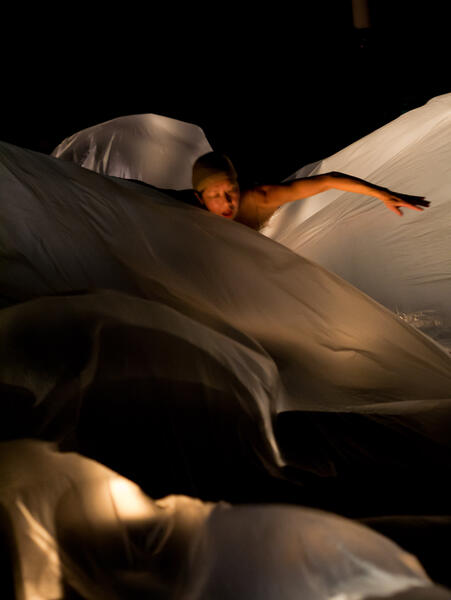 first section of SUBJECT/OBJECTNaoko Maeshiba makes an entrance.
first section of SUBJECT/OBJECTNaoko Maeshiba makes an entrance. -
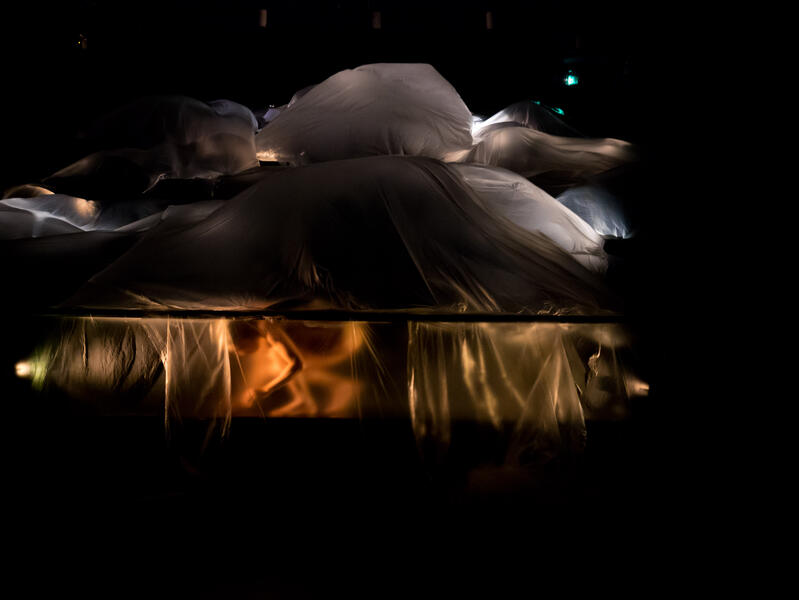 under the front rowNaoko under the first row of audience, before the "birth" sequence.
under the front rowNaoko under the first row of audience, before the "birth" sequence. -
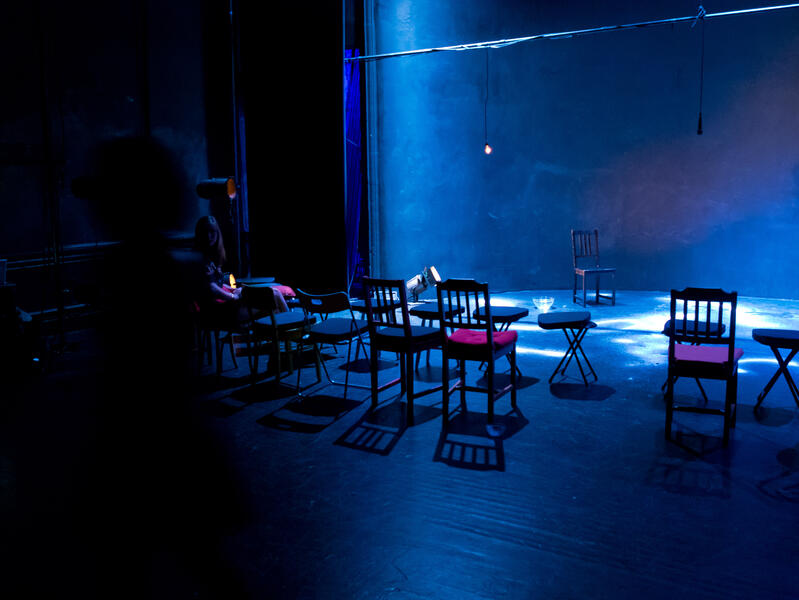 IntermissionBefore the start of the third section of Subject/Object
IntermissionBefore the start of the third section of Subject/Object -
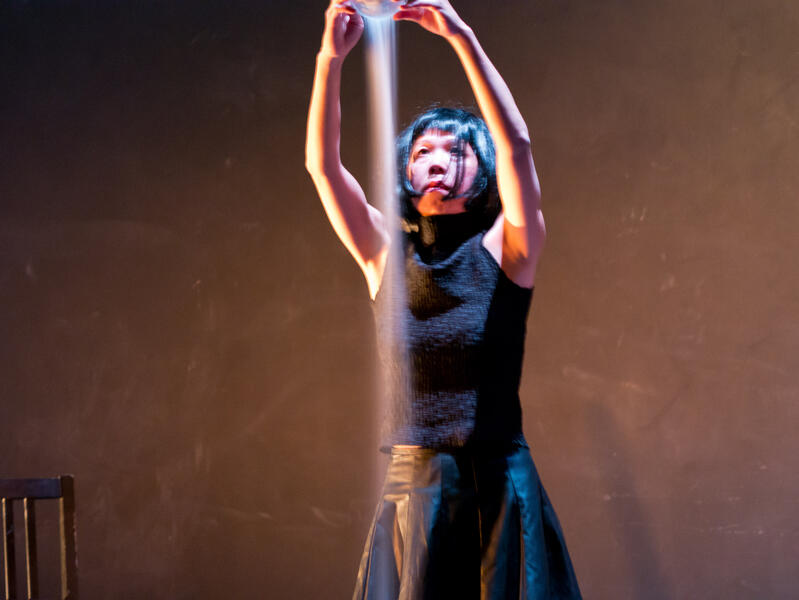 P1110359.jpgPouring salt.
P1110359.jpgPouring salt. -
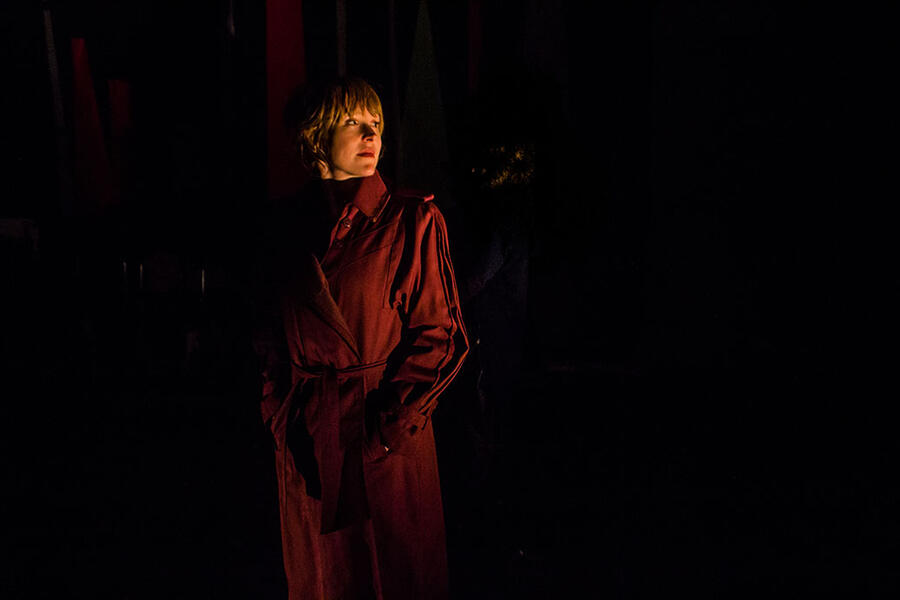 The Shattering Frame: BridgetteAutumn Breaud as Bridgette Miakaowski
The Shattering Frame: BridgetteAutumn Breaud as Bridgette Miakaowski -
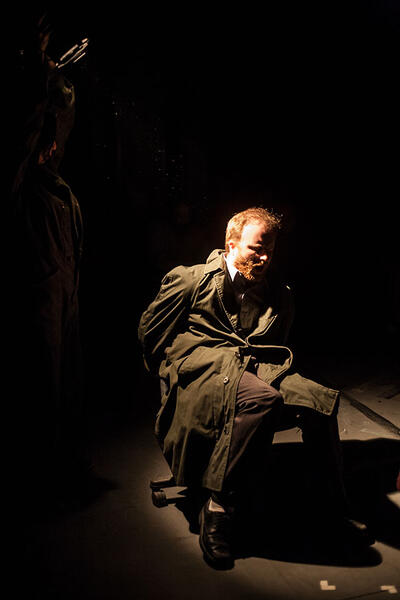 The Shattering Frame: Talk!A rat, played by Dave Iden, gets the treatment, courtesy of Mika Nakano
The Shattering Frame: Talk!A rat, played by Dave Iden, gets the treatment, courtesy of Mika Nakano -
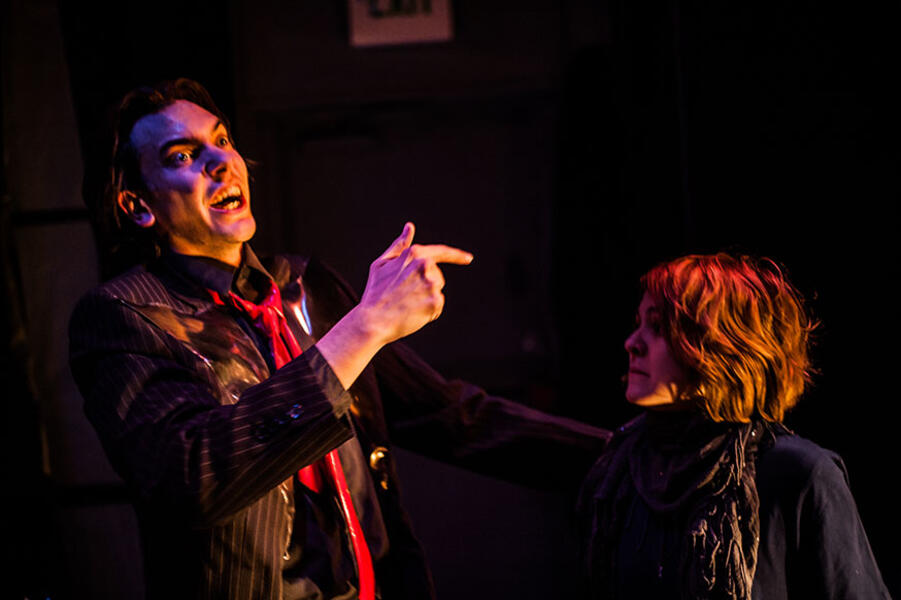 The Shattering Frame: The Mayor in TroubleThe Kid confronts The Mayor (Jacob Zabawa)
The Shattering Frame: The Mayor in TroubleThe Kid confronts The Mayor (Jacob Zabawa) -
Fête of Mistakes: The Fortune TellerMyself as David Johannes Crandall, Guesser of Obvious Fortunes
-
Fête of Mistakes: The Long Armed Lady dancesFiona Crowley as The Long Armed Lady. Photo by Dave Iden
-
Fête of Mistakes: Taking a momentRic Royer as The Actor. Photo by Dave Iden.
FÊTE OF MISTAKES: lighting design, projections engineering, performer
This production, produced by Psychic Readings Theater, given at Baltimore's Le Mondo in December 2016, presented a number of interesting challenges and opportunities. The performance space, having no existing lighting system, grid or other infrastructure, was adapted into an intimate, even claustrophobic theater that opened out into the wider space of Le Mondo for a spectacular finale demolition derby. Lighting instruments, ranging from LED flashlights to clip lights to standard theatrical fixtures, were used to create a shadowy, subterranean space situated (or not) beneath Niagara Falls.
Projections were carefully prepared to create a seamless, hypnotic moving mandala and other apparitions which helped propel the plot of this all-American demimonde.
In addition, I appeared (as David J. Crandall) with a prophetic song in the penultimate climax of the evening:
“But you must hurry! Don’t you dare be late!
The engine of fate has no governor! Get what’s coming to you! Go! Go!”
Photos by Dave Iden
-
Fête of Mistakes: The Fortune TellerMyself as David Johannes Crandall, Guesser of Obvious Fortunes
-
Fête of Mistakes: Taking a momentRic Royer as The Actor. Photo by Dave Iden.
-
Fête of Mistakes: The Long Armed Lady dancesFiona Crowley as The Long Armed Lady. Photo by Dave Iden
-
Rehearsing with JesseRic and Fiona have a moment. Jon Jacobs, as Jesse Heffler, looks on.
-
Weird BingoSome weird bingo, with projection and Hypno Booth
-
Fry Daddy!Ric and Fiona sing the praises of the Fry Daddy
-
Bingo & ZeppolesActual bingo and zeppoles, with Jesse Heffler assisting.
Mozart's THE MAGIC FLUTE at Annex Theater: music direction & orchestrations
Budget ruled an orchestra out of the question—the score would have to be played on computer and built in software—but it occurred to me to embrace this fact by scoring the orchestra as a collection of sampled toy, mechanical, and a few historical and folk instruments. By "historical" I mean samples of not just 18th century orchestral instruments, but also authentic 1950s and 60s synthesizers, including the unique Jennings Univox, a vacuum-tube instrument from 1954. The result was an exceptionally warm and unique accompaniment for the singers. The score was mixed in 4-channel surround and played back on computer.
Annex company member Jacob Budenz joined me as director of the singers, and we collaborated on stylistic details; Evan Moritz directed the staging, and Doug Johnson provided magnificent painted backdrops that paged like a giant picture-book to reveal the settings.
Photos by Dave Iden
-
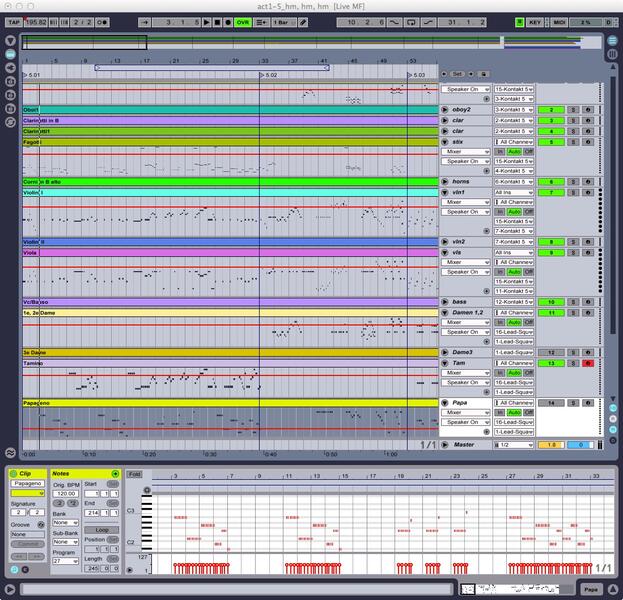 "Hm! Hm! Hm!"The orchestration of the quintet "Hm! Hm! Hm!" featuring (the magically silenced) Papageno, Tamino and the three Ladies, set up for editing as MIDI data in Ableton Live.
"Hm! Hm! Hm!"The orchestration of the quintet "Hm! Hm! Hm!" featuring (the magically silenced) Papageno, Tamino and the three Ladies, set up for editing as MIDI data in Ableton Live. -
PapagenoIshai Barnoy as Papageno in Annex Theater's production of THE MAGIC FLUTE
-
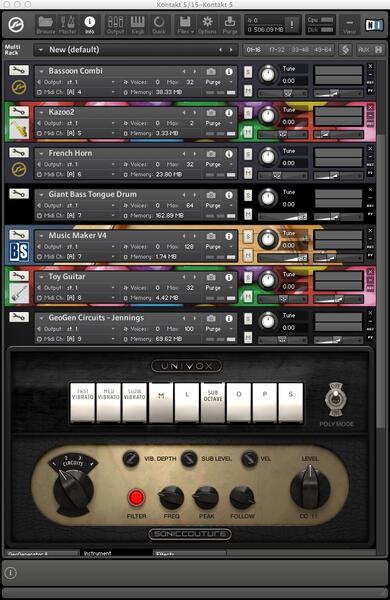 Virtual orchestraA "rack" of digitally-sampled instruments in Native Instruments' KONTAKT application. Note the presence of various toy instruments. The panel at the bottom holds controls for the Jennings Univox synthesizer plugin.
Virtual orchestraA "rack" of digitally-sampled instruments in Native Instruments' KONTAKT application. Note the presence of various toy instruments. The panel at the bottom holds controls for the Jennings Univox synthesizer plugin. -
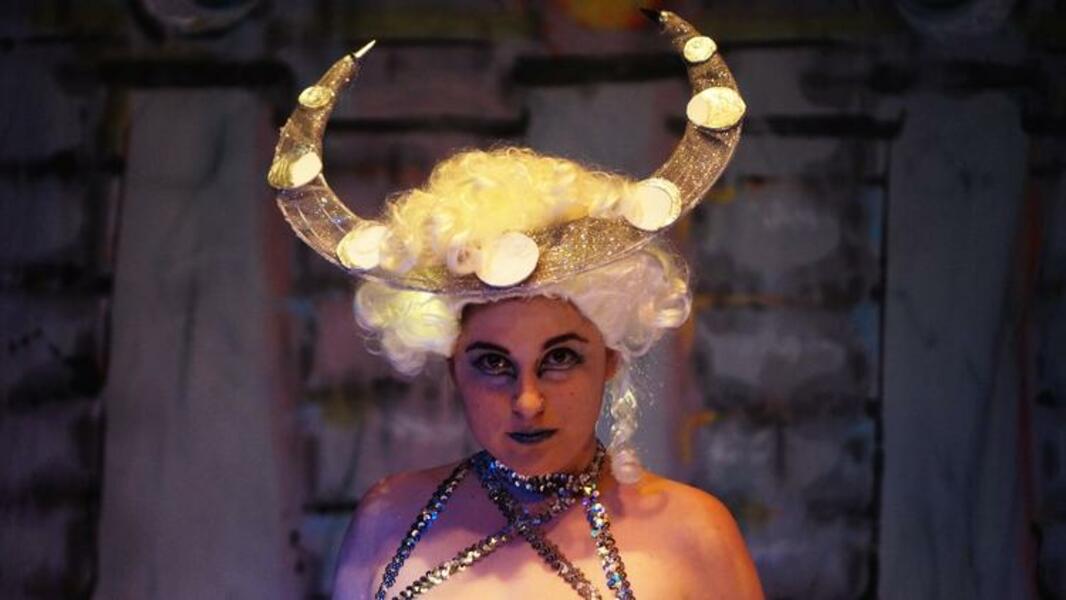 The Queen of the NightAllison Clendaniel as Queen of the Night in Annex Theater's production of THE MAGIC FLUTE.
The Queen of the NightAllison Clendaniel as Queen of the Night in Annex Theater's production of THE MAGIC FLUTE. -
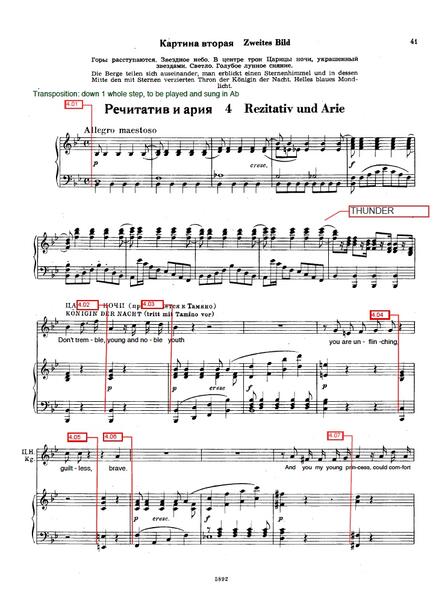 Rehearsal scoreA page from the Queen of the Night's first aria. Red markings indicate "rehearsal letters" corresponding to phrases to be manually cued in performance. We found a Russian-language piano score that had plenty of space to insert our new English translation.
Rehearsal scoreA page from the Queen of the Night's first aria. Red markings indicate "rehearsal letters" corresponding to phrases to be manually cued in performance. We found a Russian-language piano score that had plenty of space to insert our new English translation. -
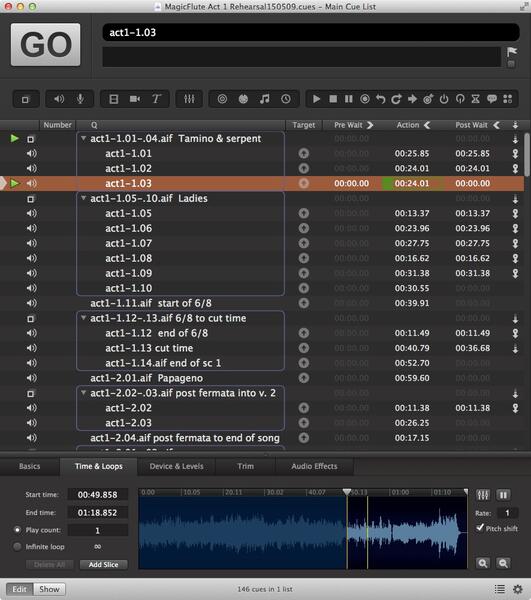 Real time playback controlThe music was broken up into phrases for easier rehearsal cuing, and larger sections to be manually cued in performance by the stage manager. This software is Qlab, from Baltimore-based company Figure 53.
Real time playback controlThe music was broken up into phrases for easier rehearsal cuing, and larger sections to be manually cued in performance by the stage manager. This software is Qlab, from Baltimore-based company Figure 53. -
Overture excerptA brief excerpt from the Overture using sampled toy and mechanical instruments.
THE WEDDING DRESS: Projections (and sound) design
The video design for this project was based on a small projector mounted in a housing that mimicked the movie cameras of the day, and allowed projected imagery to play across the curtain, permitting actors to have access from either side, and also to "shoot" video onto actors' bodies, upstage walls and other surfaces.
I also contributed the sound design for this project.
-
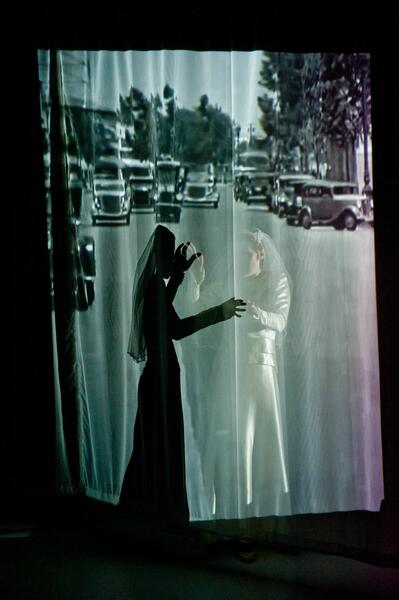 Video on the curtainVideo of Rio de Janeiro traffic projected onto a sheer curtain, with an actor behind "mirroring" her own shadow.
Video on the curtainVideo of Rio de Janeiro traffic projected onto a sheer curtain, with an actor behind "mirroring" her own shadow. -
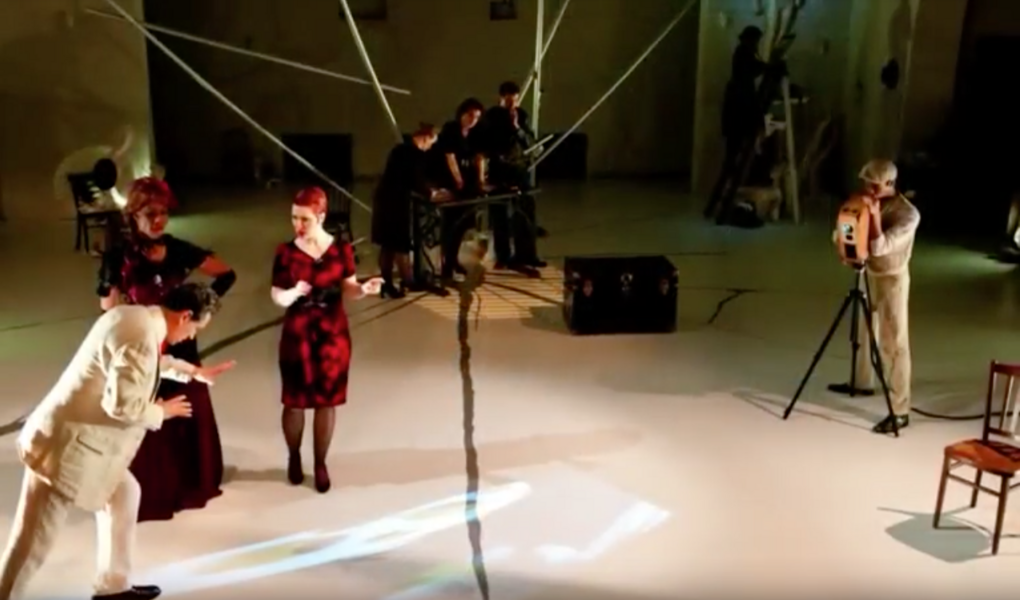 General viewThe playing space with the curtain open. Note the projector in its housing on a tripod to the right, and the image on the floor, where the actor is looking.
General viewThe playing space with the curtain open. Note the projector in its housing on a tripod to the right, and the image on the floor, where the actor is looking.
Rhymes with Opera's RED GIANT: Lighting and projections design, tech direction
Adam Matlock's Red Giant was an excellent choice for this. Set in a time when the Sun has become a "red giant" and is about to engulf the Earth, this opera follows three individuals who, among many others, have built jury-rigged spaceships and blasted off for destinations unknown, to escape certain destruction at home.
The lighting rig was very simple: a few instruments on either end of a tiny (8' wide) playing area, LED strip lights along the sides of this "rocket," and a scrim upstage that screened the orchestra (a home security monitor provided a conductor's video feed to the singers via a small CRT that was part of the set). Complex colors and imagery were provided by a single video projector mounted behind and above the action, which washed the singers with nostalgia-laden imagery as they sang of their lost home.
Songs from stage productions
-
Hella BossaA character in Annex's MASTER & MARGARITA inspired Dan Hanrahan and myself to create a song for the mysterious redhead demon, Hella, here sung by Kristen Toedtman with Portuguese lyrics by Dan.
-
Kafka On The Shore-title songThe story of Haruki Murakami's KAFKA ON THE SHORE revolves partially around a song, created during the 60s by a young, amateur musician, which threads throughout a tale of love and redemption that spans 50 years. The thought of period Japanese "rockabiri" music and a mournful Badalamenti-esque baritone guitar inspired this tune, here sung by cast member Julia Nakamoto and with lyrics by Murakami himself.
















